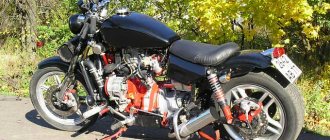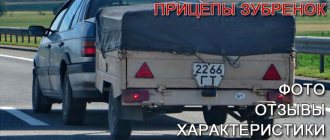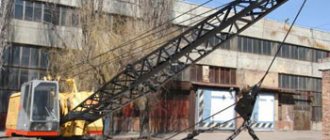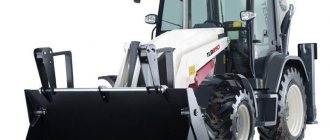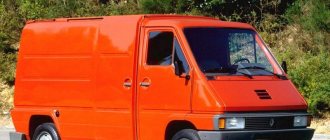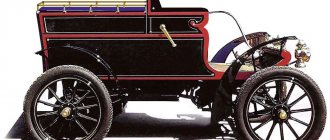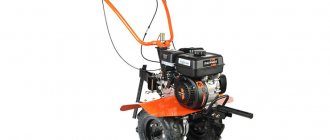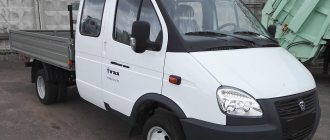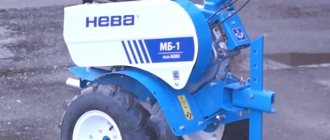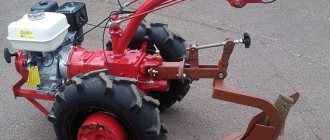The history of the development of motorcycle manufacturing goes back to 1885, when the famous German engineer Gottlieb Daimler designed a simple motorized stroller equipped with a small kerosene engine. The frame and wheels of the first motorcycle were wooden, and its speed barely reached 12 kilometers per hour.
In the Soviet Union, motorcycles appeared in the early thirties and, in fact, they were copied from their German counterparts. The domestic motorcycle IZH-350 was an exact copy of the German DKW NZ-350, the other models of the Kyiv plant repeated the parameters of the Wanderer, a German motorcycle produced by the BMW concern.
How did it all begin?
The K-750 motorcycle can be called one of the very first Soviet two-wheeled vehicles, which gave impetus to the further development of this direction. Its mass was almost 320 kilograms, and the car was accelerated by a power unit with a capacity of twenty-five horsepower and a volume of 745 cubic centimeters. Driving characteristics were provided by a four-speed gearbox, coupled to the drive wheel via a driveshaft.
The brake system was equipped with a pair of reliable drum mechanisms with flexible cables. The fuel tank with a capacity of twenty liters allowed it to cover a distance of up to 350 kilometers without refueling. Average fuel consumption was about six liters per hundred kilometers. The K-750 motorcycle was initially well-thought-out in design, and it is still reliable in operation today.
Peculiarities
The prototype of the technology in question is the German Wanderer, which ultimately lagged behind significantly in terms of acceleration and cross-country ability. The engine of the K-750 motorcycle is equipped with a pair of cylinders, has a composite pistons arrangement, and actively gains speed, maintaining them in the desired rhythm.
The engine power of twenty-six horsepower was quite enough for long journeys on various types of roads, without losing speed and traction. The motorcycle in question was in demand not only in rural areas, but was also actively used for military purposes.
Good maneuverability and smooth running were ensured by the additional drive to the front wheel, as well as a well-thought-out suspension. From 1959 to 1967, more than one hundred thousand units of equipment were manufactured under the K-750 brand. In addition, modernized versions of the motorcycle were produced, which had improved characteristics in almost all directions. Even with a sidecar, this vehicle easily reached speeds of about ninety kilometers per hour, overcoming mud and sandy areas without any problems.
Yamaha Tenere
The history of the Yamaha Tenere series begins with the Yamaha XT500, a dual-purpose motorcycle with a rather classic appearance with a high-torque single-cylinder four-stroke engine and a lightweight but durable chassis that can withstand vibrations from the stroke of a large piston. Even then, in 1976, driving these “all-terrain classics” on the sands captured the minds of travelers and simply fans of off-road adventures in America. And in Europe, the stylish classic design and charismatic engine surprisingly attracted a lot of attention from road travelers, and just city motorcyclists. However, in Europe it was not only about the qualities of this model, but also about the charismatic Frenchman, a passionate fan of off-road adventures and Yamaha motorcycles. His name was Jean-Claude Olivier, and he was an employee of Yamaha's distributor in France, Sonauto. Subsequently, however, he became president of the French Yamaha Motor France SA and largely contributed to the development of the tourenduro class itself.
Olivier's eyes shone when he saw the 500 cc single-barrel gun, and images of conquering the vast and almost deserted expanses of the African continent clearly flashed before them. He participated in many African rallies and experienced first-hand all the difficulties of this type of competition. He also took part in the famous Paris-Dakar from the Sonauto Yamaha team, and rode an XT500. At the time, industry giants paid little attention to the sport, but Olivier felt that the XT500 was literally destined for such a big race. By the way, at that time participants on two and four wheels rode together - and already in the second year of the Paris-Dakar, out of 25 motorcycles that reached the finish line, 11 were Yamaha XT500.
The third Paris-Dakar in 1981 attracted many factory teams, including motorcycle teams. The Bavarians were particularly ambitious, and the XT500 competitors were surprised to find themselves eating up the dust in the rearguard of the guys in the big boxer BMWs. The very next move, Yamaha updated the XT500, adding 50cc and equipping the bike with a YDIS (dual intake system), but rally speeds grew faster and the previous platform could no longer cope. It was here that Olivier (and Sonauto) pushed the head Yamaha to create a new model, already typical for a rally tourenduro, the Yamaha XT600 Tenere. And it was a fantastic success: sales of this model spurred the success of rally participants, and everyone who bought it deep down saw themselves somewhere in the African sands - the appearance and charisma of this motorcycle seemed so impressive at that time. Next was the “civilian” Yamaha XTZ 660 Tenere, and based on the rally version (which bore the same name as the serial one, but in fact was quite different, for example, with a 51-liter tank), after several trials and errors the XTZ750 Super Tenere was created , capable of traveling at high speed for a long time and at the same time enduring any difficulties of driving in the desert. This model subsequently evolved into the XTZ1200 Super Tenere. Over the years, even the small-capacity Tenere 250 has appeared in the Tenere line, but today the main question is this: which model, the XTZ690 Tenere 700 or the XT1200ZE Super Tenere ES, is better?
Yamaha Super Tenere 1200 2021
Motorcycle K-750: characteristics
The unit in question has the following parameters, which may differ slightly depending on the modification:
- number of seats - 2 or 3 (with stroller);
- length / width / height - 2.43 / 1.1 / 0.82 meters;
- wheelbase - 1.45 m;
- power unit - carburetor four-stroke gasoline engine with a pair of cylinders;
- cylinder diameter - 78 millimeters with a piston stroke of 78 mm;
- compression ratio - 6;
- speed - up to 4,800 crankshaft rotations per minute;
- working volume - 746 cubic centimeters;
- engine power - 26 horsepower;
- total weight - two hundred and forty kilograms;
- ground clearance - twelve centimeters;
- carburetor type - K-37A.
At maximum speed (90 km/h), the unit consumes about six liters of fuel per hundred kilometers and has a maximum load of 300 kilograms.
Other parameters
The ignition of the K-750 motorcycle is combined with a six-volt battery. The battery is of type ZMT-12, the generator is G-414 with a regulatory relay RR-302. In addition, the electrical equipment includes an induction coil and an interrupting distributor.
Chassis characteristics:
- closed double tubular frame;
- front telescopic suspension;
- rear suspension unit - lever-pendulum type with spring shock absorbers;
- front / rear wheel travel (amplitude) - 14 / 9.5 centimeters;
- tires - 3.75 / 19 inches.
The brake system is a drum assembly with friction shoe linings.
Improvement
Over time, the K-750 motorcycle was restyled and received the prefix “M” in its name. The front fork has been replaced with a telescopic counterpart. The gearbox has also been updated and received a foot drive. The updated driveshaft is now adjustable in length. The power unit has undergone significant changes.
The valves in the new engine are located on top, which, with the old cylinder volume, allows the power to be increased to 32 “horses”. Engine speed remained at 5200 rpm. The prefabricated crankshaft was converted into a one-piece design, the connecting rod bearings were removed, and Babbitt bearings were installed instead. Thanks to the modernization, the service life of the unit increased to 40 thousand kilometers, and repairs became easier. The cylinder heads have also been restyled. As a result, the K-750M motorcycle became faster and more maneuverable. It could accelerate to 105 km/h while consuming less fuel (5.98 liters per 100 km). The installation of an automatic ignition timing system also affected the efficiency of fuel consumption.
Honda NC700S – TEST/REVIEW
2013 onwards, 670 cm3, 48 l. s., 215 kg, 353,000 rub.
text: Anton Vlasov photo: Roman Romanishin
In the photo: Anton Vlasov
»It would seem that it could combine naked, crossover and maxi-scooter. It turns out that absolutely everything: from the frame and engine to the rims and brakes!
In 2012, Honda released a new family of road motorcycles, the NC700, the representatives of which are built on the same platform, which is surprisingly well suited to such different devices. The NC700S model is a little-known and undeservedly unpopular naked bike in Russia, which in fact turned out to be one of the most unusual representatives of its class!
What came first - the chicken or the egg? In the variant of the Japanese naked bike, the well-known dilemma of all times and peoples is transformed into the question “what comes first: a maxi-scooter or a motorcycle, and for whom was the platform common to the devices of the NC700 family originally created?
And although the Japanese claim that the base was developed for everyone at once, I would venture to disagree and assume that the development of the Integra model was primary, since the architecture of the steel frame and, in general, the layout of the devices of the NC line are more typical of scooters than motorcycles. From this position, it would not be an exaggeration to call the NC700S... a scooter, although this term is usually used to refer to machines of a completely different class.
For many motorcyclists (including me), a naked bike is, first of all, a bright design. And the NC700S has obvious problems with this: the appearance of the device cannot be called brutal - there is not a single “aggressive” feature in it, it is completely friendly! NC’s appearance is rather cloyingly cartoonish, in the style of anime, the favorite cartoon series of modern schoolchildren.
The strange silhouette formed by a steel frame of an atypical shape and a 2-cylinder in-line engine pushed forward does not add beauty to the motorcycle... The situation is saved by numerous plastic shields, with which the motorcycle is “ennobled” on all sides, as well as elegant rims and a sharp “tail” line ", visually making the Japanese naked bike lighter.
Helmet inside
However, whether the model’s design is good or not is a purely personal question and belongs to the category of holy wars of discussion unfolding in the network space. But one thing cannot be taken away from the Honda NC700S: the motorcycle looks original and is unlike anyone else! Except perhaps for the co-platform creations of the Honda concern...
A distinctive feature of the NC line models is a unique steel frame, the lower pipes of which rush from the steering column to the engine crankcase at a minimal angle and are lost under plastic shields that partially cover the engine. The Honda power plant itself attracts attention with a cylinder block strongly inclined towards the front wheel, which harmoniously fits into the unusual frame. Due to this layout and original design, the NC700S has several unique features that distinguish this naked bike from its classmates.
And, perhaps, the main feature for which I fell in love with the Japanese naked bike from the very first day of the almost week-long test is the impressive trunk volume, quite unexpectedly located on the NC in the place where the gas tank usually “lies” on other motorcycles! The “locker” is indeed stylized as a fuel tank, and for most people the trick of removing a full-face helmet from the “gas tank” is an unexpected trick.
Especially for gas station workers, who, every time they refuel a motorcycle, approach the false tank and humbly wait for the owner of the NC700S to open the fuel tank. The real gas tank of a naked Honda is located in the “tail” and even mainly in the center of the device, and the filler neck is covered by the passenger seat.
In addition to the constant wow effect and the ability to place a spacious trunk in the traditional place of the fuel tank, this arrangement has another undeniable advantage - good centralization of masses. Add to this the ultra-low nature of the Japanese naked bike due to the specific design of the frame and the location of the engine, and you will get not just banally simple and easy handling, but truly amazing maneuverability, literally mental obedience, for which the NC700S can be forgiven for all its flaws. But more on that later.
Despite the design features of the NC model, the ergonomics of the device are classic: straight and comfortable fit, moderately wide handlebars, controls standard for Honda motorcycles of recent years, fairly low footrests and a low seat height. The latter quality will be especially appreciated by “owners” of average height who were unlucky enough to be included in the Russian basketball team.
All the way
The motorcycle is equipped with an in-line 2-cylinder medium-sized engine, ideal for a purely urban vehicle. As has been said more than once, the cylinder block of the NC700S power plant is tilted forward, which lowers the center of gravity and loads the front wheel of the naked bike. The Japanese “two” has very moderate vibrations, which I would even call pulsations, and an unusual tuning that gives this weak and “bland” engine even some character.
Although the maximum power of the NC700S engine is, to put it mildly, not impressive (only about 46 hp at the rear wheel), the nature of its output in the Japanese “two” is the most “correct”: absolutely linear, smooth and predictable. But the most interesting thing is in the torque graph, where the thrust curve soars upward like an impregnable cliff already at 2400 rpm and beyond, fluctuating only slightly in value, and “lasts” on a smooth plateau until the harshly triggered cutoff at 6325 rpm.
Due to this type of torque, the NC700S dynamically accelerates almost from idle, and is also extremely tolerant of “pull” driving, errors in gear selection and other typical awkwardnesses of a city dweller tired of moving through traffic jams. An interesting feature of the NC700S is the unobvious moment when the rev limiter is triggered: after several days of testing and several hundred kilometers traveled behind the wheel of a Japanese naked bike, I still haven’t learned to determine at what point it’s time to upshift when accelerating!
Neither did any of my colleagues succeed, who, after a test ride, in bewilderment, returned the motorcycle with the diagnosis “It doesn’t run, it’s monstrously “strangled”... Tests of the NC700S on a dynamometer showed that it does run, and even very well for 46 -strong engine! And the reason why it is almost impossible to feel the moment at which the tape tachometer scale hits the insurmountable wall of the limiter, which rather harshly cuts off the engine power, is in the torque characteristic of the motor.
Usually, after reaching the maximum thrust value of the power plant, the torque decreases quite quickly, and the motorcycle pilot feels this change in engine operation well. But this does not happen in the case of the in-line “two” naked Honda! Take a look at the torque graph: here at 4785 rpm the maximum thrust value, but at 6325 rpm the limiter is activated - and the difference in torque is small. In other words, the inexhaustible flow of thrust abruptly bumps into the electronic “noose,” and therefore this moment is unexpected every time.
Solar powered
The outstanding efficiency and environmental friendliness of modern motorcycle engines have become no less effective weapons for marketers than the notorious peak performance of engines. Every year, the power plants of new products consume less and less fuel, expanding the autonomy of the vehicles and saving money for the owners, and, probably, the day is not far off when internal combustion engines with a rated consumption of 5 liters per 100 km will be considered monstrously gluttonous and be called rapidly disappearing atavisms...
This is clearly not a threat to the in-line NC700S! The Honda naked engine is the most economical mid-sized engine I've ever had the pleasure of working with! The minimum fuel consumption of 3.5 liters per 100 km for the NC700S is not mythical passport data, but real indicators that shocked me every time I refueled the motorcycle. Of course, such outstanding fuel efficiency figures were given to the Japanese naked bike for a reason, and in the name of saving the world’s oil reserves, Honda engineers had to sacrifice both maximum power and the breadth of the operating range of the power plant...
However, as I already said, the NC700S did not seem particularly weak to me - it is quite comfortable to move around the city on this motorcycle (and do it quickly!), and on a country highway you do not at all feel like a cyclist. One day, far from being the most beautiful, I had to wander around the nearest Moscow region and the capital itself quite a bit - and I was very lucky that at that time I had a Honda NC700S at my disposal. Sprinting in 30-degree heat along the route Moscow - Noginsk - Iksha - Moscow - Noginsk - Moscow, and after another fifty kilometers around the metropolis would not have been so easy for me if it weren’t for the naked Honda!
Simplicity of control, benchmark ergonomics, decent driving performance, a bottomless trunk in which I transported valuable documents, a bottle of water, and even a couple of dozen magazines, as well as the phenomenally modest appetite of the engine, as they say, “made my day.” If I were driving the “resourceful” Honda VFR800X Crossrunner, by the evening I would be “carried out” of it... and the V-shaped “four” would use at least twice as much fuel.
The maximum speed of the NC700S is about 190 km/h, which, you see, is worthy for such a weak device. Considering the almost complete lack of wind protection, there is no great desire to reach speeds above 130 km/h. In this sense, the crossover version of the NC700X, which has a developed hood and a high windshield, looks like a more attractive option for tourism.
Seven steps?
The operation of the gearbox left me with mixed feelings. On the one hand, like all new Honda motorcycles, the gearbox of the NC700S model is “intelligible” and clear, and the lever travel is short. On the other hand, due to the already mentioned non-obviousness of the moment of gear shifting, due to which at almost every gearbox stage the naked engine inevitably “stuck” into the gearbox, I began to get confused and by the end of the test I was already convinced that the motorcycle had seven gears...
However, this is not a complaint about the gearbox itself, but about the tuning of the engine, whose even “shelf” of torque pampers the rider and allows him to forget when and what degree of transmission he chose. A bit of uncertainty in this matter is also introduced by more than moderate vibrations of the in-line “two”, which even at maximum speed works as smoothly as at idle. The braking system is not the NC700S's strong point. However, considering that the motorcycle belongs to the budget segment and costs even less than the 649 cc CB650F, you should not expect outstanding braking dynamics from the device.
For city driving, which daily presents the rider with surprises in the form of cars suddenly changing lanes and old ladies running across the road, a front 3-piston Nissin caliper and a rear 1-piston caliper are quite enough. Traditionally for Honda, the NC700S model is equipped with combined ABS. Based on the purpose and positioning of the device, it is not surprising that its suspension is not much more complicated than on mountain bikes of the average price category: a non-adjustable fork with stays with a diameter of 41 mm plus a pendulum rear suspension with a simple monoshock absorber “implanted” in the Pro Link lever system .
The energy content of the chassis is typical for motorcycles of this class: the travel of the front and rear wheels is 120 mm. At the same time, the potential of the suspensions is sufficient even for entertaining, let’s call it that, driving on a go-kart track - for everyday movement around the city it is even more sufficient, and during the testing of the device there was never a case where I wished the NC700S had a more advanced chassis.
Europe
At the presentation of one of Honda's new products in Europe - I think it was a test drive of the VFR1200X Crosstourer - a journalist from Switzerland, an elderly man with a gray beard, with sparkling eyes, told his colleagues how impressed he had recently been with the NC700S. The most frequently used words in his narrative were “diesel” and “truck.”
Then I had not yet had a chance to ride an NC, and therefore I was very skeptical about the speech of a native of the country of chocolate, watches and pocket knives... Almost a year later, when, finally, I got around to testing this unusual Honda naked, I remembered the words of the European kol legi - after all, he was one hundred percent right! The Honda NC700S is one of the weirdest city bikes I've ever ridden!
Absolutely everything about this device is surprising: from the atypical frame design and engine location to the unusual engine tuning and the built-in trunk of a substantial volume. But all these features definitely benefited the model, and each of them only adds individuality to the Honda naked car and makes it better. Once again, having decided on a bold experiment, the Japanese concern created a unique machine, which confidently took a place in the top five in my personal rating of ideal city motorcycles! /
Purpose
The units in question were actively used in the transport fleet of the Ministry of Internal Affairs in the 50-60s of the twentieth century. The motorcycle was also actively used in the army. It was rarely seen among private owners. The equipment went into retail sale in the seventies, after being written off from its main place of work.
Now spare parts for the K-750 motorcycle, like the cars themselves, are in demand among connoisseurs of Soviet transport and collectors. Craftsmen carry out tuning of equipment, bringing its appearance and driving performance to indicators that in Soviet times were the ultimate dream. The cost of motorcycles in this class varies over a very wide range, it all depends on the year of manufacture and the condition of the car.
Usage
K-750 motorcycles were widely used by law enforcement agencies. In the 50-60s of the last century, motorcycles with sidecars were the main patrol vehicles of the police. The K-750 rarely came into private hands until the mass decommissioning of vehicles from the army and police units occurred in the early seventies. Almost all of the decommissioned motorcycles went on retail sale and were snapped up by the public.
What do the owners say?
The lucky ones who have this rarity in their fleet note that after additional tuning the unit looks quite solid. Comparing it with the most modern models, users focus on the unique engine performance, evoking a certain nostalgia for Soviet transport. After all, the clutch of the K-750 motorcycle, like the engine and other components, could be sorted out and repaired yourself, rejoicing at the success achieved in the end.
If we move away from the lyrics, we note that finding spare parts for the unit is quite problematic, not to mention a full-fledged car on the move. This is not surprising, because its production stopped a long time ago. However, persistent collectors still find what they are looking for, despite the difficulties.
Summary
All in all, there are two different but distinct motorcycles under one common name. Excellent, but very different! The Yamaha Super Tenere 1200 is a niche model in a niche segment, a faster and asphalt-oriented tourenduro than most of its rivals, while also being more off-road than, for example, the Versys 1000. And a wide range of tuning options allows you to refine off-road or, on the contrary, asphalt qualities according to to your taste and mood. Its engine is absolutely excellent for any long journey, it is powerful and predictable, it will not let you down on the longest journey and will not punish you for a mistake due to fatigue at the end of a long day.
Yamaha Tenere 700 is simple, fun and wild. There are also a lot of options and accessories for it, allowing you to equip it completely for yourself. It is quite capable of becoming a more road model without losing its off-road qualities, but making the 1200 as light and all-terrain as the 700 is almost impossible. Therefore, choosing between them is very simple: if you plan to go off-road, then it makes sense to consider the Tenere 700. If we are talking about asphalt tourism with a number of dirt roads and nearby exits from them, the Super Tenere 1200 would be the ideal choice.
Conclusion
The K-750 motorcycle can rightfully be called a legend of the Soviet automobile industry. In its class, it had no equal not only among domestic equipment, but also among many foreign analogues. The quality and reliability of the vehicle is evidenced by its use by police patrols and army units for a long time.
The heavy motorcycle K-750 appeared as a result of the modernization of the famous motorcycle from the Great Patriotic War M-72.
Initially, the M-72 was planned to be produced at factories in Moscow, Leningrad and Kharkov. Probably, the letter M just meant the Moscow Bicycle Plant, located in the Kozhukhovo district in the southern part of the capital. When the war began, the factories had to be evacuated. Moscow - to the Ural Irbit, Leningrad and Kharkov - to Gorky. As a result, the Gorky Motorcycle Plant arose on the territory. He successfully produced the M-72 at the end of the war and the first years after the Victory. But in 1949, the government decided to repurpose the Gorky Motorcycle Plant and transfer the production of the M-72s needed by the country to Kyiv.
Since 1945, a motorcycle factory operated on Kagatnaya Street in the capital of Ukraine. He produced a light motorcycle K-1B "Kievlyanin" class 125 m 3, a clone of the German Wanderer. They decided to sacrifice this model for the sake of the former Gorky M-72. However, the restructuring of production took several years. The first heavy motorcycles rolled off the Kyiv assembly line in 1951, but they were assembled from imported parts. First from the Gorky stock, and when it ran out - from the Irbit stock, and in parallel with the assembly of the last batches of the “Kiev” ones. By 1955, it was possible to master the full production cycle, but the M-72, created before the war, was completely outdated by that time.
The result of the gradual modernization of the motorcycle was the new model K-750 of 1958, an original Kiev development, which was not a copy of the Ur Al motorcycles obtained through a separate modernization of the M-72, carried out in Irbit. As a result, the country has two independent manufacturers of heavy motorcycles of the same class. To reduce competition, planning authorities tried to distribute and sell Kyiv motorcycles in the European part of the country, and Irbit motorcycles beyond the Urals.
The K-750 engine was equipped with new cylinder heads: the shape of the ribs changed and the compression ratio increased. The front engine cover with breather became different. Two oil scraper rings appeared on the piston, and ribs were made on the oil sump for better cooling. The rear wheel suspension became pendulum, spring, with telescopic hydraulic shock absorbers, which were absent on the M-72 and its modifications. Finally, the K-750 differed from its predecessor in a new stroller with a spring (not torsion bar) wheel suspension and a hydraulic shock absorber.
In 1963, the modernized K-750M appeared. An automatic ignition advance and a paper element in the air filter were installed on some cars. Instead of an M-72 type gearbox, a modernized one was installed, and the front fork also changed: it featured double-action hydraulic shock absorbers and increased wheel travel.
K-750 motorcycles were widely used by the police. The 50-60s were a time of massive use of motorcycles with sidecars as patrol vehicles. The police K-750 starred in Eldar Ryazanov’s famous film “Beware of the Car.” In it, the traffic police inspector, played by Georgy Zhzhenov, pursues Yuri Detochkin’s Volga, and before that he starts the motorcycle itself from a tow using the same Volga: “With an old battery, this is not life.”
K-750 motorcycles were found among private owners back in the 60s, but many of them were decommissioned from the army and police and “privatized” in the 70s. Currently it occurs quite often. The Museum displays a restored K-750.
Technical specifications
| Number of places | 2-3 |
| dimensions | 2400x1600x1060 mm (with side trailer) |
| Width and track with sidecar | 1700x1110 mm |
| Wheelbase | 1450 mm |
| Engine | gasoline, carburetor, two-cylinder, four-stroke, opposed, lower valve |
| Working volume | 746 m 3 |
| Power | 26 at 2900 rpm |
| Dry weight | 315 kg |
| Maximum speed | 95 km/h |
| Average fuel consumption | 7 l/100km |
Welcome to the motorcycle-oriented site. Detailed figures and many descriptions related to the operation of motorcycles can be found here. Many sections of this web resource have been created specifically to help improve two-wheeled equipment. A separate content of the moto site relates to the popularization of unusual bikes. The most original iron horses are waiting for your attention...
Cacique
The Dnepr K-750 motorcycle is known to many precisely by the above name. That’s what they called him a long time ago and the name was widely popularized among the masses of Soviet lovers of two- and three-wheeled vehicles.
Over time, information sources began to forget about this feature and the iron horse, as manufacturers began to officially call it.
Motorcycles of the above line have joined the ranks of successful KMZ products for quite a long time. In the Soviet era, the release of this bike was considered a real gift for connoisseurs of the four-stroke opposed-cylinder engine.
Let us note right away that the Dnepr K 750 motorcycle became a continuation of the legendary motorcycle from the times of the USSR - “IMZ M 72” (another name for the Ural M72). The main difference between the above biker transport is more significant power indicators and the presence of individual modernized components. It received a higher compression ratio than its legendary competitor. In addition, the Kasik motorcycle was equipped with improved suspensions and a more efficient engine cooling system. At the same time, the power of the Kasik from the MT impressed representatives of that distant post-war period, reaching 26 horses.
First of all, it is worth noting the large overall dimensions of the bike, as well as its enormous weight. The length of this iron horse was 2.4 meters and the width was 1.65 m.
The bike also had a larger base. The distance between the axles of its wheels is 1.45 meters. The cacique could accelerate to an apparent top speed of 90 km/h. At the same time, he was probably hampered by his huge mass of 318 kg. Note that this MT motorcycle could transport almost its own weight. And the operational fuel consumption of this iron horse did not scare off buyers. For 100 km of travel, this motorcycle required only 6 liters, which, with such a huge engine displacement, is not considered something supernatural, especially considering the year of development. Half a century ago, you won’t find bikes with a high degree of efficiency with a large engine capacity in the daytime in the USA, or in Italy, or in the vaunted Japan. There is generally silence about China. At the same time, this technique had a considerable tank. Its capacity was 21 liters.
The powerful four-stroke two-cylinder engine could accelerate the MT Dnepr motorcycle quite quickly. It was equipped with a carburetor fuel supply system and air cooling. With a working volume of 750 cm3, the Kasik motorcycle also had a considerable cylinder diameter of 78 mm.
Let us note that these days, fortunately, the compression ratio of “6” that this vehicle possessed is no longer “pleasant” for lovers of two-wheeled vehicles. The speed of the above steel monster is also low. The motorcycle's power unit produces only 4800 rpm. maximum.
History of the K-700
The Leningrad Kirov Plant was tasked with developing a new tractor in the shortest possible time and putting it into production. The company had extensive experience in tractor manufacturing: since 1924 it has produced the Fordson-Putilovets, and since 1934 the Universal. From 1924 to 1936, Kirov residents produced about 40 thousand machines that replaced the horse and plow. Conversion to heavy tanks during the Great Patriotic War contributed to the creation of a solid design and production-technological base, which was also quite suitable for tractors. A comprehensive reconstruction of the enterprise began. Many old buildings were demolished, and in their place huge buildings equipped with the latest equipment were erected. A 250 m long conveyor appeared in the tractor assembly building. A large forging and stamping shop, a welding shop, a tractor delivery shop, etc. were built.
At the end of 1961, the Kirov Plant began creating the most powerful tractor at that time - the K-700. In January 1962, a technical design was developed and approved, and in May working drawings of experimental K-700 tractors were prepared. The design of this machine and the production of its pilot batch were completed in an unprecedentedly short time. This became possible thanks to the highly qualified personnel of designers, engineers and workers, for which the plant has always been famous, since the time when it was called Putilovsky. Soon the enterprise began mass production of the powerful Kirovets K-700 wheeled tractors created by the team.
Motorcycle Cacique in features
The design and components of the Dnepr K-750 bike have a considerable number of differences in comparison with previous models from MT. The Kiev Motorcycle Plant nevertheless tried to create a model that has many interchangeable parts. For this we need to say thanks, first of all, to V. Svyatnenko.
The Ukrainian version of the boxer motorcycle received an improved finish for that time, as well as a lever fork upgraded with spring-hydraulic shock absorbers. In addition, the wheels of the new iron horse were equipped with aluminum hubs, which can be adjusted thanks to roller bearings. The spokes were also strengthened.
As of 1960, design work on the creation of the MT Kasik motorcycle, which you can still buy today (if you wish, somewhere you will find a new copy, well, practically new), was simply in full swing. Representatives of the Kyiv Motor Plant managed to not only increase the power of the iron horse, but also make it fast, regardless of whether it is equipped with a sidecar or the side trailer is detached.
New hydraulic shock absorbers on wheels (even sidecars) together with rubber springs allowed the bike to have a better ride. KMZ also improved the reliability of the already quite durable chassis components, as well as the motorcycle transmission.
The history of the development of motorcycle manufacturing goes back to 1885, when a famous German engineer designed a simple motorized stroller equipped with a small kerosene engine. The frame and wheels of the first motorcycle were wooden, and its speed barely reached 12 kilometers per hour.
Motorcycles appeared in the early thirties and, in fact, they were copied from German counterparts. The domestic motorcycle IZH-350 was an exact copy of the German DKW NZ-350, the other models of the Kyiv plant repeated the parameters of the Wanderer, a German motorcycle produced by the BMW concern.
Motorcycle Honda NC 700
The Honda NC 700 is a typical road bike that is perfect for people for whom a motorcycle is their usual means of transport.
Racers and aesthetes will probably turn up their noses at this “gray” model, but as a bike for everyday needs, it’s hard to imagine a more suitable motorcycle.
For whom
Here are the main features of the Honda NS 700:
- lack of plastic body kit;
- good performance for its class;
- aesthetic appearance.
This car is probably not suitable for a beginner. She is too powerful, and her character is far from the calmest. In general, the engine size itself already suggests that the Honda NC 700 will not obey an inexperienced driver. Well, if you already have experience, then the motorcycle will seem quite easy to operate.
Specifications
In terms of its parameters, this is a fairly advanced mid-level bike, in which everything is balanced, from the engine to the chassis. Thanks to the correct selection of components and their settings, Honda has created a very harmonious motorcycle that is capable of demonstrating good results by today’s standards.
Engine
The NC 700 is equipped with an in-line engine with two cylinders and four strokes. Its effective volume is 669 cm³. At its limit, this unit produces a torque of 62 Nm and a power of 52 hp. The maximum speed is 180 km/h, and the bike can accelerate to hundreds in 6 seconds.
Transmission
This motorcycle has a chain drive, which allows you to transfer all the engine power to the rear wheel. The NC 700 has a six-speed transmission. Such a transmission is quite enough to ensure the full potential of its engine.
Dimensions and weight
The seat height of this model is 830 mm, which is a very average figure. The wheelbase here is 1535 mm. Even without fuel, the motorcycle weighs over 200 kg, and with it - all 230 kg. The volume of the car's gas tank is 14.1 liters, which is quite a lot with an average consumption per hundred kilometers of 3.58 liters.
Chassis and brakes
The bike is equipped with a diamond-shaped steel frame. It presents a classic-looking body that fully complies with road class standards. The discreet handlebar design and alloy wheels make this motorcycle attractive to those accustomed to the muted beauty of classic technology.
The rear suspension is pendulum and equipped with a monoshock absorber. At the front, a telescopic fork acts in this capacity. The motorcycle is stopped by a 240 mm rear disc with a single-piston caliper and a 320 mm front disc with two-piston calipers. Both rear and front may have ABS.
Production
The model began production in 2012 and is still in production today. The bike has a great future, especially if it constantly keeps up with the times. For him it will not be difficult, because the motorcycle is designed in such a way that there is nothing special to update. After all, this is a simple car for the city, and the increasing performance of rivals is not a big deal for the NC 700.
Classmates
Competitors to this model include the MT-07 from Yamaha, the SFV 650 Gladius from Suzuki and the ER-6 from Kawasaki. All of these motorcycles have equally good, well-thought-out characteristics, but many may like the design of the NC 700 more.
History of changes
The only changes that can be mentioned are minor updates in 2016. In general, the motorcycle has not undergone any fundamental changes, and it does not need them. The NC 700 was quite modern from the very beginning, and its typically classic design ensures its relevance in the future.
Start of production
This is the first model with which the production of two-wheeled vehicles began. The weight of the entire structure was 318 kilograms, the 745 cc/cm engine developed a power of 25 hp. With. The motorcycle was equipped with a four-speed gearbox; rotation was transmitted to the drive wheel using a cardan shaft, which ensured a fairly smooth ride.
It consisted of two reliable drum mechanisms with flexible cable drives. A twenty-liter fuel tank made it possible to cover a distance of 350 kilometers without refueling. Fuel consumption was no more than 6 liters per 100 kilometers. From the very beginning of production, the K-750 motorcycle was considered a successful development that did not require any changes in the design. Well-designed components and assemblies interacted smoothly, and their layout made it easy to make all the necessary adjustments that were required during operation.
In terms of its reliability, the K-750 motorcycle was far ahead of its predecessor, the M-72, and the German Wanderer prototype was hopelessly behind it in cross-country ability and acceleration dynamics. The torquey two-cylinder engine with opposed pistons picked up speed in hundredths of a second, barely containing the power. 26 horsepower was more than enough for acceleration and for a long trip. K-750″ - one of the modifications of the basic model, more economical and fast - was in high demand and was supplied to military units.
An additional drive to the sidecar wheel ensured high maneuverability as well as an unprecedentedly smooth ride. In the sixties of the last century, the K-750 motorcycle became the most popular vehicle throughout the USSR. Over the entire production period - from 1959 to 1967 - more than 100 thousand motorcycles were produced, and later modifications of the K-750 were made in large quantities.
The K-750 with a sidecar reached speeds of up to 90 kilometers per hour. Smooth running was achieved due to rubber springs installed under the stroller at three points, as well as thanks to hydraulic shock absorbers on all wheels. Of significant importance in the production of the K-750 was its almost one hundred percent unification with the units and components of motorcycles produced on the Kyiv plant’s conveyor belt did not stop for a minute, spare parts were delivered on time by rail. At that time, there was no marketing as such, but Soviet supply structures worked uninterruptedly.
Review of the Honda CTX700 / CTX700N motorcycle
Model series Honda CTX700
appeared on the market on July 11, 2013, introducing the
Honda CTX700N
- a road motorcycle with the features and ergonomics of a cruiser.
On August 6 of the same year, the line was replenished with a touring version of the Honda CTX700
, featuring plastic wind protection. The new model series CTX stood for Comfort, Technology, eXperience.
The base and configuration of the Honda NC700 was taken as the basis for the Honda CTX700. Thus, for the regular versions of the CTX700, models were offered with combined ABS (C-ABS), as well as with an automatic transmission (DCT - dual clutch transmission). In general, the CTX700 series is budget and has nothing in common, except the name of the series, with the Honda CTX1300 model.
The Honda CTX700 engine is an in-line 2-cylinder liquid-cooled unit with a displacement of 669 cm³ and produces 48 hp. power and 60 Nm of torque. The engine is a redesigned version of the Honda Jazz car engine with a 270° crankshaft.
Other features of the Honda CTX700 include a steel frame, simple suspension in the form of a conventional telescopic fork and a progressive rear monoshock absorber, a 12-liter fuel tank, a 6-speed gearbox and a curb weight of 219 kg.
The CTX700 series models were available primarily in the Japanese, North American and Australian markets. At the same time, the model is practically not represented on the European market.
The Honda CTX700 model was produced until 2022 inclusive, after which it was discontinued. As of late 2022, the 2022 model is available in the US market.
The main competitors of the Honda CTX700 in the class:
Content
Brief history of the model
- 2013 (2014) – start of production and sales. This year's models are the same as 2014 models.
Model
: Honda CTX700 + ABS, CTX700D (DCT – dual clutch transmission);
Honda CTX700N + ABS, CTX700ND (DCT) (Japan, North America, Australia, Europe). Factory designation
: CTX700E, CTX700AE, CTX700DE; CTX700NE, CTX700NAE, CTX700NDE.
- 2015 – no significant changes.
Model
: Honda CTX700 + ABS, CTX700D (DCT);
Honda CTX700N + ABS, CTX700ND (DCT) (Japan, North America, Australia, Europe). Factory designation
: CTX700F, CTX700AF, CTX700DF; CTX700NF, CTX700NAF, CTX700NDF.
- 2016 – no significant changes.
Model
: Honda CTX700 + ABS, CTX700D (DCT);
Honda CTX700N + ABS, CTX700ND (DCT) (Japan, North America, Australia, Europe). Factory designation
: CTX700G, CTX700AG, CTX700DG; CTX700NG, CTX700NAG, CTX700NDG.
- 2017 - this year only the touring version with automatic transmission and the regular version with ABS are available.
Model
: Honda CTX700 ABS, Honda CTX700D (DCT) (Japan, North America, Australia, Europe).
Factory designation
: CTX700AH, CTX700DH.
- 2018 is the last year of production.
Model
: Honda CTX700D (DCT);
Honda CTX700N (DCT) (North America). Factory designation
: CTX700DJ; CTX700NDJ.
Modernization
After some time, the K-750 model was modernized and became known as the K-750M. The difference was significant. The front wishbone fork was replaced with a telescopic, more modern one. A new gearbox with a closed-type foot shift mechanism was installed; the modernized driveshaft could be adjusted in length.
Further improvement of the motorcycle concerned the engine, the lower valve design of which did not allow increasing power by increasing the combustion chamber. The design of the engine was changed radically, the valves were moved to the top, the cylinder volume remained the same, and the engine power increased to 32 hp. With. Stable power was provided at 5200 rpm, which is a relatively low figure.
At the same time, the durability and reliability of the motor was increased. The prefabricated crankshaft was replaced with a solid cast one, the connecting rod roller bearings were replaced with Babbitt bearings from Moskvich-407. The service life of the crank assembly has increased to 40 thousand kilometers, and repairs have become much easier, since replacing the bearings with the next repair size is quite simple. During the engine modernization process, two oil scraper rings were added to the pistons. Later, the cylinder heads were replaced, the new ones became more finned, and the degree of cooling increased. The result is a powerful, efficient engine. The K-750 motorcycle has become faster and more maneuverable.
The speed of the motorcycle increased to 105 kilometers per hour. Fuel consumption decreased by 200 grams and amounted to 5.8 liters per hundred kilometers at a speed of 60 km/h. The efficiency of the engine has become stable and constant, thanks to the installed automatic ignition timing system.
On the asphalt
It's on the open road that the Yamaha Super Tenere 1200 really shines. You turn on the Tourist mode, sit back, set the windshield to the desired height, turn on the warm grips, if necessary, turn on the cruise control - and just float over even the fastest bumps. Yes, the 1200 is a real cruise ship, and I think you can conquer thousands a day with great pleasure and without much stress, enjoying every second.
The clunky rear suspension with rebound action that's too fast for confident cornering turns out to be excellent if you don't expect sporty handling from the Super Tenere. It is soft, comfortable, with a wide and comfortable seat, large footrests and the most comfortable seating position - high, with excellent visibility and even somewhat proud, or something. Yes, the instrument panel is hard to read and the tank is quite wide, but otherwise the bike is extremely good. It has good mirrors, the cruise control is precise and responsive, the transmission is soft, and the high center of gravity is not felt even at low speeds.
The Yamaha Tenere 700 is in many ways a simpler motorcycle when it comes to asphalt touring, be it large highways or narrow serpentines. Yes, it can devour kilometers, but it remains a giant enduro. It spins up easily and freely goes an honest 120, and in general it can accelerate to 200 km/h, but in off-road gears and with a less powerful engine it is clearly harder for it: the engine is louder and vibrates more than on the 1200.
The Yamaha Tenere 700 is not the cheapest motorcycle, but it is definitely cheaper than the Super Tenere, and this is reflected in the lack of an adjustable windshield, cruise control, warm grips... you get the idea. It is comfortable, but not for long rides on asphalt in the saddle - so, I rode for an hour and a half to two hours, got up, and warmed up. You can hang a lot of luggage on it, including using standard racks, but on the Super Tenere there is more. Its range from a 16-liter tank is about 300 km, and a 1200 tank is capable of 450-550 km from one refill. On narrow suburban roads with bad asphalt, it handles quite well, the suspension holds confidently and it doesn’t get stormy at all, but this is partly a question of good tires.
In the city, the 700 should be more comfortable, but the trouble is that it is very high. Yes, it is lighter and narrower, but the 1200 is more confident and smoother in traffic, and the lower seat is a plus. The only thing is that it gets very hot in traffic jams, the fan is constantly thrashing. There is no quickshifter on both models, and this is a minus for each.
Technical characteristics of motorcycles K-750 and K-750M
They are as follows:
- number of seats - in the two-wheeled version 2 seats, with a stroller - 3 seats;
- Dimensions in the two-wheel version: length 2430, height 825, width 1100 mm;
- with a stroller - width 1700 mm, track 1200 mm;
- wheelbase - 1450 mm;
- engine - opposed, carburetor, gasoline, two-cylinder, four-stroke;
- cylinder diameter - 78 mm;
- compression ratio - 6;
- piston stroke - 78 mm;
- crankshaft rotation speed - 4600-4800 rpm;
- working total cylinder volume - 746 cc/cm;
- power - 26 l. With.;
- total weight - 240 kg;
- motorcycle - 90 km/h;
- fuel consumption - 6.0 liters per 100 kilometers;
- carburetor brand - K-37A;
- fuel tank capacity - 21 liters;
- ground clearance - 120 mm;
- maximum load - 300 kilograms.
The technical characteristics of motorcycles may have changed slightly during production.

